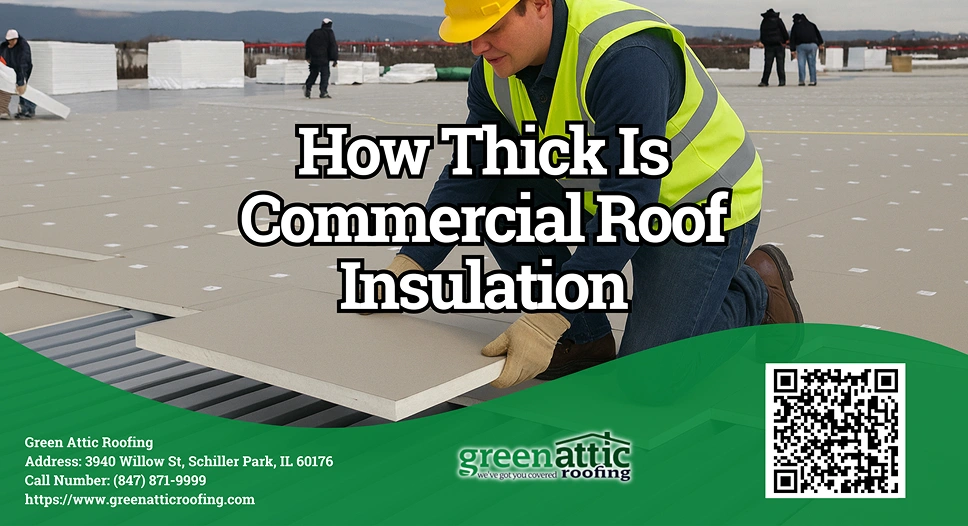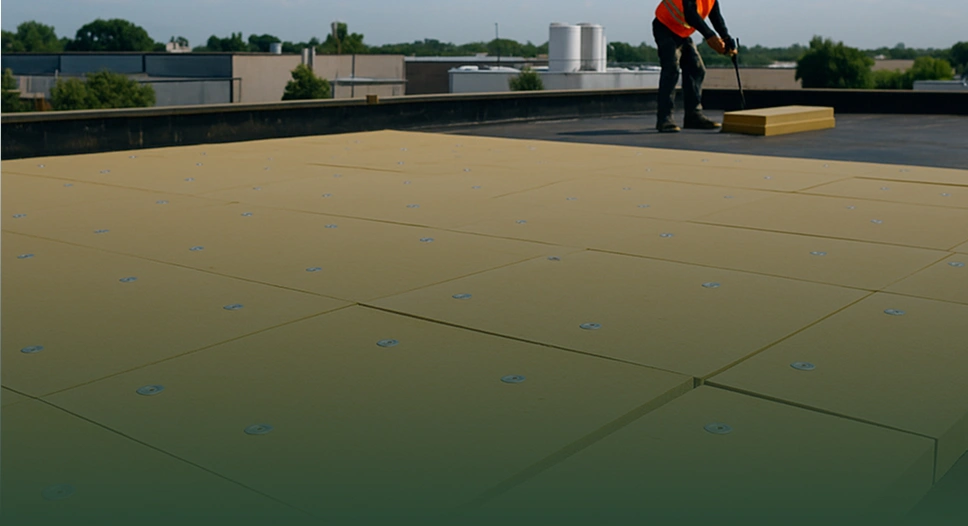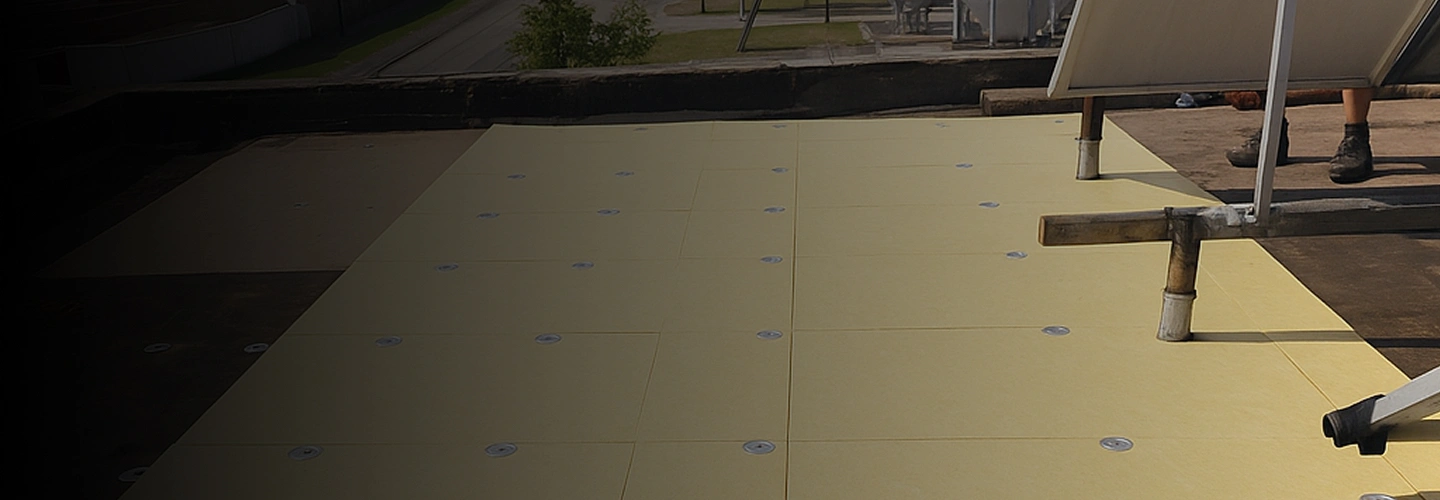Choosing the right thickness for commercial roof insulation helps achieve energy efficiency goals while ensuring the system complies with all applicable building code requirements and design criteria.

A typical range of 1 to 4.5 inches offers excellent flexibility when using efficient materials like polyisocyanurate (polyiso).
For example, a 2.6-inch polyiso board is a popular choice because it offers an ideal blend of excellent R-value performance and cost-efficiency.
Typical Insulation Thicknesses by Material:
Polyiso Roof Insulation (Polyisocyanurate) typically comes in 1" to 4.5" boards, offering a simple, scalable way to meet higher R-value requirements through layering, as commonly recommended by leading insulation manufacturers.
EPS/XPS (Expanded/Extruded Polystyrene Foam Insulation): With common thicknesses from 2" to 6", high-density EPS and XPS foam insulation offer reliable options for achieving targeted energy efficiency in commercial roof systems.
Tapered insulation systems can reach up to 40 inches in thickness, offering an effective way to manage roof slope and ensure proper drainage.
Green roofs combine insulation with soil and vegetation, resulting in total roof build-ups ranging from 18 to 60 inches that offer excellent thermal performance and environmental benefits.
Factors That Influence Insulation Thickness:
- Climate Zone:
To support energy savings in colder climates, the IECC encourages the use of thicker insulation that delivers higher R-values and better heat resistance.
Warmer climate zones may achieve energy goals with thinner insulation, making it a practical and efficient choice especially for retrofit projects.
- Energy Code Compliance:
The International Energy Conservation Code (IECC) helps guide energy-efficient design by setting clear minimum R-value standards, such as R-25 and R-30.
Local building code authorities often provide tailored insulation guidelines that support optimal performance across different roofing systems.
- Material R-Value:
Polyiso insulation offers excellent thermal performance, delivering approximately R-5.7 per inch meaning a 2.6-inch board can achieve a solid R-15.
- Roof Assembly Design:
Choosing the right combination of deck material, membrane system, and vapor barrier allows for the insulation level to be adjusted for optimal energy performance.
Many commercial roofing systems benefit from a cover board installed above the insulation, adding compressive strength, supporting foot traffic, and enhancing membrane adhesion.
- Roof System Function:
Roofs designed for stormwater control or solar reflectivity often benefit from additional insulation layers, enhancing energy and system performance.
A cover board adds an extra layer of protection for the insulation, safeguarding it during construction and routine maintenance activities.
Pro Tip: For cold-region projects, using 8 to 12 inches of insulation with layered polyiso or hybrid systems ensures superior energy performance and full code compliance.
How Does R-Value Affect Roof Performance?

The higher the R-value, the better the insulation’s thermal performance. Most polyiso insulation boards have an R-value of about R-5.7 per inch, making them one of the most efficient insulation products on the market.
Meeting R-value requirements from local building codes and the IECC ensures energy compliance while boosting overall building efficiency.
Since requirements differ by climate zone, choosing insulation with the right R-value per inch ensures strong performance and long-term efficiency.
Using two layers of insulation not only increases the total R-value but also reduces thermal bridging this is a best practice across the roofing industry for commercial applications aiming for a high R-value roof system.
Authoritative Insight:
This guidance is consistent with leading insulation manufacturers’ recommendations and recognized ASHRAE standards, ensuring reliability and accuracy.
Local energy code authorities and certified building envelope consultants can provide the exact requirements needed for your specific project.
Summary Table: Insulation Thickness by Type & Use Case
Why This Matters
Proper insulation thickness helps commercial buildings meet energy effectiveness goals, reduces HVAC costs, and ensures long-term roof performance.
It also plays a vital role in meeting IECC and LEED standards, while reducing risks like condensation and membrane failure, making it an essential part of any roof specification.
About Green Attic Roofing
At Green Attic Roofing, we specialize in commercial and residential roofing including solar roof installation (with a focus on Tesla Solar Roofs), roof repair, replacement, insulation and ventilation.
We proudly serve the Chicago area and surrounding suburbs, including the North Shore and Northwest suburbs.
Our team provides expert consultation and professional installation, ensuring your roof not only protects your property but also delivers measurable energy savings and enhanced comfort year-round.
Contact Green Attic Roofing today to discover how the right commercial roof insulation can improve efficiency, reduce costs, and create a durable, sustainable roofing system tailored to your needs.
.svg)






